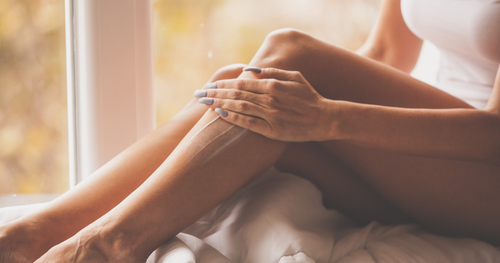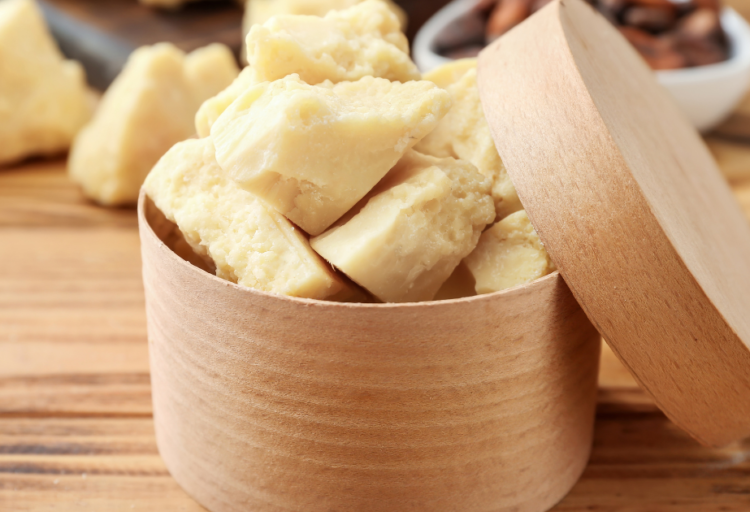Okay, so you’ve just gotten a fresh shave and you notice hyperpigmented dots on your legs. Don’t panic if this is your very first encounter, as there are reasonable explanations. This can possibly be strawberry legs, which look like the exterior of the strawberry fruit. So, what are strawberry legs and why are you experiencing them? Strawberry legs are a symptom of different skin conditions and concerns thoroughly delved into in this article.
The skin consists of many elements that help its functions, with pores being one of them. Pores are located on the surface of the skin, except for the palm of the hands and the soles of the feet. Their primary function is to release oil and sweat produced by the sebaceous and sweat glands, respectively. Hair peaks through the pores in your skin. Therefore, after you shave or remove these hairs, the pores can be more noticeable. If the question, “what are strawberry legs?” persists, let’s dive into it further.
Strawberry Legs Causes

You can experience strawberry legs for a variety of reasons. Some of the causes are discussed below. If you are looking for more details, you will find it all in this article: strawberry legs causes.
Pore clogging
There are many reasons why strawberry legs can arise. Clogged pores are one of the main reasons. As previously discussed, pores are essential elements of the skin. The function of pores can become compromised, leading to blocked or clogged pores.
Sebaceous glands in the skin produce sebum (oil), which is then secreted out through the pores. On its way out of the pore, the oil carries debris and dead skin cells onto the surface. Once this function becomes compromised, the pores become clogged with oil, debris, and dead skin cells. Pore clogging can also occur because of excess sebum production by the sebaceous glands. In both cases, the pores can appear enlarged due to the trapped mixture of oil, dirt, and dead skin cells. Therefore, after removing hair, the pores get exposed to air causing oxidation of this mixture; hence, the dark appearance.
Keratosis pilaris
keratosis pilaris (KP) is a skin condition that presents with tiny rough bumps. This condition is the result of abnormal keratinization of the hair follicles due to a genetic component. As a result of the keratin clogging your pores, you get something like strawberry skin, which is a symptom of KP.
The buildup of the keratin around the hair follicles is what contributes to the patchiness and roughness experienced with KP. It can also appear red, discolored, or a few shades darker than your complexion. While this is a benign skin condition, it may present discomfort for some people.
Strawberry Legs Treatment

There are different approaches you can take when dealing with strawberry legs. For example, if pore clogging is the issue, you can address this by using strawberry legs products that target oil production. Cleansers, exfoliants, and moisturizers with specific ingredients that address your skin concern will be extremely beneficial.
• Best cleansers: Strawberry legs body washes
• Best exfoliants: Strawberry legs exfoliators
• Best for hydration: Strawberry legs moisturizers
Ingredients To Look Out For
• BHAs, such as Salicylic acid: Beta-hydroxy acids (BHAs) work deeper within the pores. They are oil-soluble acids, which simply means they love oils and can break down sebum and keratin plugs within the pores. For instance, salicylic acid, a common BHA is effective in removing oil. Therefore, using products with salicylic acid is key when dealing with clogged pores.
• Niacinamide: This is a common ingredient in skincare products. It is a form of vitamin B3 that is also beneficial when treating strawberry legs. They have various functions, one of which is their involvement in the upregulation of ceramide synthesis; thus, improving moisture retention. In addition, they are also helpful in reducing oil production. The different skin benefits make niacinamide an amazing ingredient for improving skin barrier function.
• AHAs (i.e., Glycolic acid & Lactic acid): These are water-soluble acids and are effective for the surface of the skin. They work as exfoliating agents as they’re able to properly remove any hindering elements from the surface of the skin by dissociating the connection between skin cells.
• Retinol: This ingredient is beneficial in improving skin appearance by smoothing and evening out skin texture. They also increase skin cell turnover, which reduces oil retention. It helps reduce oil production, therefore can be a helpful ingredient when treating strawberry legs.
• Urea: Dry skin conditions can benefit from urea. Urea is a natural component of the skin that helps with moisture retention and skin hydration. It is found in many skincare products, not only for its moisturizing benefits but also for its keratolytic effects, which help soften the skin.
What To Do While Treating Strawberry Legs?

1. Avoid over-exfoliation
By over-exfoliating, you are creating irritation and further damage to the skin. The exfoliation should be consistent, but not excessive. The ingredients will do their job, but your exfoliating schedule should not exceed 3x a week, as this can work against you.
2. Don’t ignore hydration
Remember to moisturize your skin daily during your treatment process. While many people may be afraid to hydrate in this instance, it is beneficial to keep your skin hydrated. The lack of moisture can promote skin dehydration, which is not favorable for optimum skin barrier function.
3. Use sunscreen
Your face is not the place on your body that can benefit from sunscreen. The rest of your body, your legs included need protection as well. Your treatment plan also includes various exfoliating acids; therefore, sunscreen should be a part of your body care routine.
4. Give your skin a break
Sometimes, hair removal techniques can be the cause. Therefore, giving your skin time to recuperate can be helpful. Also, adopting better shaving practices can also help in reducing the appearance. For example, avoid using dull and old blades while shaving.
5. See a dermatologist
A personalized treatment plan may be needed in some cases to identify the source. Although harmless, if you’re experiencing inflammation or pain, it is important to seek the advice of a dermatologist. In addition, there are in-office treatments, such as laser hair removal that your dermatologist may recommend.





Leave a Reply